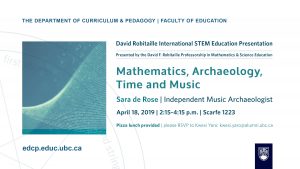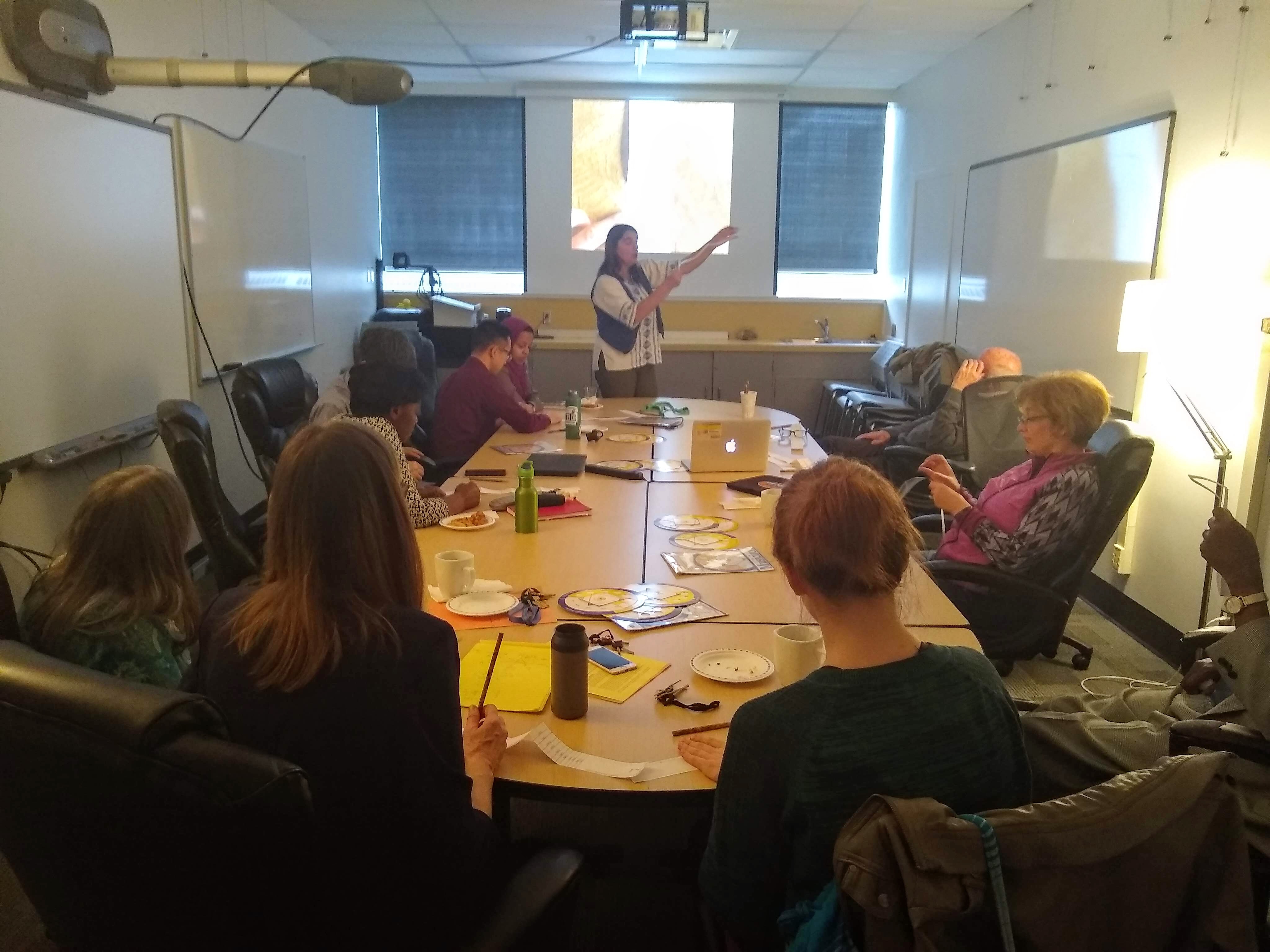Monthly Archives: August 2019
Design, Landscape Architecture and Youth
Presenter/Guest Speaker: Prof. Daniel Roehr, School of Architecture and Landscape Architecture, UBC
Date/Time: March 13 2019, 12-30-2:30pm
Venue: Scarfe Room 1209, UBC
Host: Dr Cynthia Nicol
Prof. Roehr is a professor at UBC and Founder/Director of greenskins lab, a research group at UBC School of Architecture and Landscape Architecture. The lab disseminates information on urban design retrofits and new approaches that improve the ecological functions of public open spaces. For more information: http://www.greenskinslab.sala.ubc.ca/
Prof. Roehr’s recent projects also include the use of concept/ideation and design process examples as teaching tools for young designers. His research draws on his international practice as a landscape architect in Japan, Europe, China and North America.
Thanks to all attended!!
Mathematical collaborative engagement through using mobile technology
Presenter/Guest Speaker: Mina Sedaghatjou (PhD), Sessional Instructor at UBC and research associate in computational thinking in STEAM education at Western University, Ontario (Canada).
Date/Time: Wednesday, February 21, 2019, 12:30 – 1:30 pm
Venue: Scarfe Room 1209
Host: Dr Cynthia Nicol
Dr Sedaghatjou describes her presentation as follows:
In this presentation, I shared my findings from one of my studies that explored how when a group of young children come together to engage in negotiation about mathematical ideas and activities as they draw on each other’s cultural experiences for a shared understanding of mathematical meanings. This study considers how mobile technologies, along with children’s collaborative engagements, can enhance mathematical learning. We adapted the theory of touchscreen-based interactions and utilized StudioCode software to better understand children’s collaborative practices and how they engage in mathematical activity using touchscreen-based devices. Our ideas emerge from children’s use of an iPad application called TouchCounts, which aims to develop number.
Culturally Responsive Mathematics Education and Chambers’ Curriculum of Place
Presenter/Guest Speaker: Amanda Fritzlan, 3rd Year EDCP Doctoral student
Date/Time: January 30, 2019, 12:30-1:30 pm
Venue: Scarfe Room 1209, UBC
Host: Dr Cynthia Nicol
Amanda describes her presentation as follows:
For this paper, I created a conversation between recent research into culturally responsive mathematics and Canadian curriculum theorist Chambers’ (2008) proposed a curriculum of place. Chambers’ challenges education researchers to write from the places where they live and work. She describes four conceptual realms: a different sense of time, enskillment, education of attention, and wayfinding.
Chambers (2008) connects a different sense of time to her realization that many people had lived where she lives, in southern Alberta, before her, and that it takes people a very long time to learn how to live with the land in a way that they are nourished by the land. Enskillment, the second element of Chambers’ curriculum of place, assumes that people are dependent on the land and communities where they live. Learned skills become part of who a person is as they are developed in relation to surviving in place.“Through education of attention, each generation learns to notice the clues to a place, the clues through which each generation must learn how to live here, and the clues by which what it means to live here, may be revealed” (Chambers, 2008, p. 122). Wayfinding, the final realm this conception of a curriculum of place, involves learning about places as you go, learning from the land, and through multiple literacies (eg. singing, dancing, storytelling, hunting). Each of these four elements of Chambers’ curriculum of place creates a vocabulary for thinking about interactions and common threads between different culturally responsive mathematics education researchers’ work.
Reference
Chambers, C. (2008). Where are we? Finding common ground in a curriculum of place. Journal of the Canadian Association for Curriculum Studies,6(2), 113–128.



